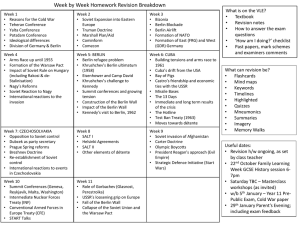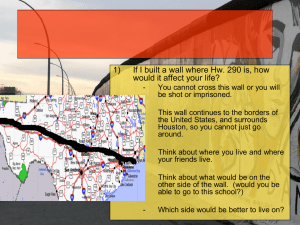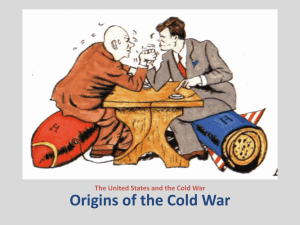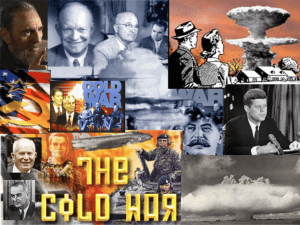Berlin Air Lift DBQ
advertisement
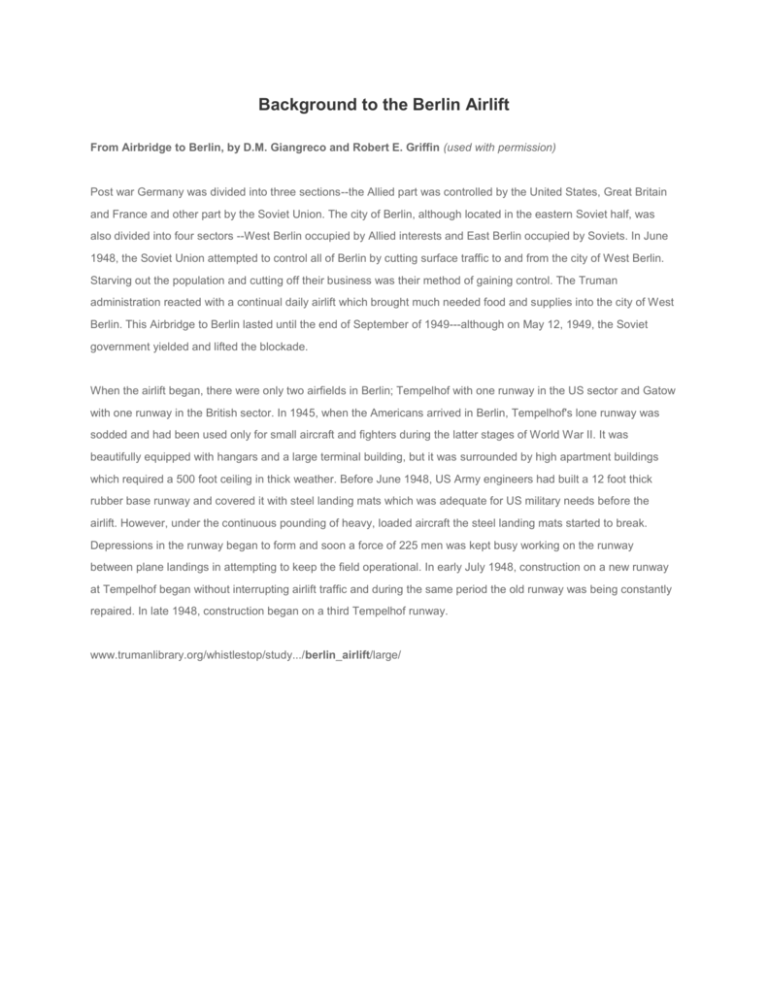
Background to the Berlin Airlift From Airbridge to Berlin, by D.M. Giangreco and Robert E. Griffin (used with permission) Post war Germany was divided into three sections--the Allied part was controlled by the United States, Great Britain and France and other part by the Soviet Union. The city of Berlin, although located in the eastern Soviet half, was also divided into four sectors --West Berlin occupied by Allied interests and East Berlin occupied by Soviets. In June 1948, the Soviet Union attempted to control all of Berlin by cutting surface traffic to and from the city of West Berlin. Starving out the population and cutting off their business was their method of gaining control. The Truman administration reacted with a continual daily airlift which brought much needed food and supplies into the city of West Berlin. This Airbridge to Berlin lasted until the end of September of 1949---although on May 12, 1949, the Soviet government yielded and lifted the blockade. When the airlift began, there were only two airfields in Berlin; Tempelhof with one runway in the US sector and Gatow with one runway in the British sector. In 1945, when the Americans arrived in Berlin, Tempelhof's lone runway was sodded and had been used only for small aircraft and fighters during the latter stages of World War II. It was beautifully equipped with hangars and a large terminal building, but it was surrounded by high apartment buildings which required a 500 foot ceiling in thick weather. Before June 1948, US Army engineers had built a 12 foot thick rubber base runway and covered it with steel landing mats which was adequate for US military needs before the airlift. However, under the continuous pounding of heavy, loaded aircraft the steel landing mats started to break. Depressions in the runway began to form and soon a force of 225 men was kept busy working on the runway between plane landings in attempting to keep the field operational. In early July 1948, construction on a new runway at Tempelhof began without interrupting airlift traffic and during the same period the old runway was being constantly repaired. In late 1948, construction began on a third Tempelhof runway. www.trumanlibrary.org/whistlestop/study.../berlin_airlift/large/ Map What is significant about the location of Berlin? Why is Berlin in the Soviet occupation zone? Press Conference Why did President Truman answer "No Comment" when asked about the situation in Berlin? Philip Johnson Letter to President How does Philip Johnson assess the President's handling of the Berlin Crisis? According to Mr. Johnson, what will be the result of President Truman's handling of the situation Telegrams What indicates how determined the allies were to remain in Berlin? What indicates that the Berlin Crisis was of concern to not just the United States, Great Britain, and France? What is one possible outcome of this concern? Assessment ASSESSMENT How does the Berlin Airlift illustrate or exemplify a success of the U.S. policy of containment? Write a response to the question utilizing and citing a minimum of one document from each category -- primary documents, editorial cartoons, and pictures. Your response should include an explanation of the policy of containment and background information to the Berlin Crisis. Picture 1 1. Who are the people in the picture and what are they doing? 2. Why is there such interest in the plane? Picture 2 1. What is being loaded on this plane? 2. What countries might be involved in this and why? What does this tell us about the Berlin Blockade? Why is MILK a weapon?



